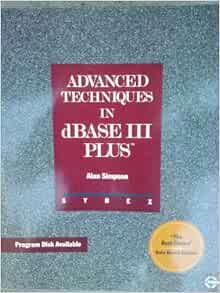Scaling up your spraying operations? Whether you’re a large-scale farmer, a professional groundskeeper, or managing a vast acreage, efficient and effective spraying is crucial. Stihl offers powerful and reliable equipment designed to handle large-scale applications, but mastering the techniques for optimal performance requires understanding some key concepts. This guide delves into advanced techniques for large-scale spraying with Stihl, covering everything from engine choice and torque considerations to practical advice for maximizing efficiency and minimizing downtime.
Understanding the Importance of Torque in Large-Scale Spraying

Torque, the rotational force an engine produces, is paramount when it comes to large-scale spraying. Unlike horsepower, which focuses on speed, torque directly relates to the power available to overcome resistance. In spraying, this resistance comes from the pump, the pressure required to effectively atomize the spray, and the sheer weight of the equipment itself, especially when dealing with larger tanks and booms. Higher torque translates to smoother operation, especially when tackling thicker liquids or dealing with clogged nozzles. A low-torque engine might struggle, leading to inconsistent spraying, increased wear and tear, and potential equipment damage. Stihl’s professional-grade engines are engineered with this in mind, delivering the robust torque needed for demanding applications.
Stihl Engine Options for Large-Scale Spraying: A Detailed Look

Stihl provides various engine options suited for different scales of operation. Let’s explore a few examples (note: specific model availability may vary by region; always check with your local Stihl dealer):
- High-Torque, Air-Cooled Engines: These engines, often found in larger backpack sprayers and mounted units, provide exceptional power for sustained operation. Their air-cooled design simplifies maintenance and reduces the risk of overheating, critical for long workdays.
- Water-Cooled Engines: For truly extensive operations requiring many hours of continuous spraying, a water-cooled engine might be a worthwhile investment. They offer superior cooling capabilities, preventing overheating even under extreme conditions. However, this comes with added complexity and weight.
- Engine Displacement: The engine’s displacement significantly impacts both torque and power. Larger displacement engines typically deliver higher torque, but also generally weigh more and consume more fuel. Choosing the right displacement involves carefully weighing power needs against maneuverability and fuel efficiency.
Torque and Towing Specifications: Knowing Your Limits
If you’re using a towed sprayer with a Stihl engine, understanding the towing specifications is crucial. Exceeding these limits can lead to engine damage, compromised sprayer performance, and potentially hazardous situations. Stihl provides detailed towing capacity information for each model. This information includes:
- Maximum towing weight: The total weight your Stihl-powered vehicle can safely tow.
- Maximum gradeability: The steepest incline the vehicle can safely climb while towing.
- Recommended towing speed: The optimal speed for safe and efficient towing.
Always consult your owner’s manual for precise specifications. Overloading your vehicle can lead to reduced fuel efficiency, overheating, and premature wear on both the engine and the towing system.
Comparing Stihl with Competitors: A Fair Assessment

Stihl competes with several major players in the professional spraying equipment market. While direct comparisons are complex due to varying model specifications and features, some key differentiators often cited by users include:
- Engine Durability and Reliability: Stihl consistently ranks highly for engine longevity and reliability, a crucial factor in demanding large-scale spraying operations where downtime is costly.
- Ergonomics and Ease of Use: Many users appreciate Stihl’s focus on ergonomic design, reducing operator fatigue during long work periods.
- Service and Support Network: A robust dealer network and readily available parts are vital considerations. Stihl’s extensive service network often gives it an edge.
- Price Point: Stihl equipment typically falls into the premium price range, reflecting its build quality and features. A cost-benefit analysis is crucial before purchase.
It’s recommended to thoroughly research and compare specific models from various brands based on your exact needs and budget before making a decision.
Practical Advice for Maximizing Efficiency and Minimizing Downtime

Beyond the technical specifications, several practical tips can significantly enhance the effectiveness and longevity of your Stihl-powered spraying equipment:
- Regular Maintenance: Adhering to the recommended maintenance schedule is paramount. Regular cleaning, lubrication, and inspection can prevent costly repairs and downtime.
- Proper Fuel and Lubricants: Always use the recommended fuel and lubricants to ensure optimal engine performance and longevity. Using incorrect fluids can severely damage the engine.
- Nozzle Selection and Calibration: Proper nozzle selection and calibration are critical for consistent spray patterns and efficient chemical application. Experiment to find the ideal settings for your specific needs.
- Safe Operating Procedures: Always prioritize safety. Wear appropriate personal protective equipment (PPE), follow all safety guidelines, and never operate the equipment when fatigued or under the influence of alcohol or drugs.
- Environmental Considerations: Be mindful of environmental regulations. Avoid spraying during periods of high wind or when there is a risk of drift onto non-target areas.
Investing in high-quality Stihl spraying equipment and employing these advanced techniques can significantly improve efficiency, reduce operational costs, and ensure successful large-scale spraying operations for years to come. Remember to consult your owner’s manual and seek expert advice when needed. Your local Stihl dealer is a valuable resource for technical support and maintenance.